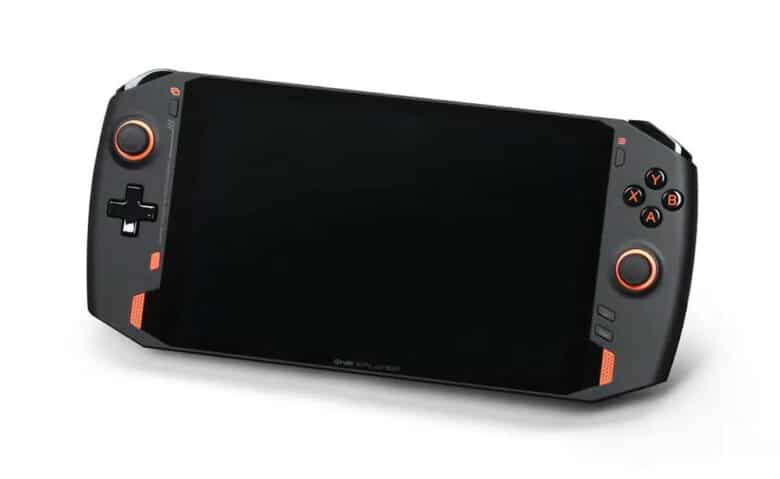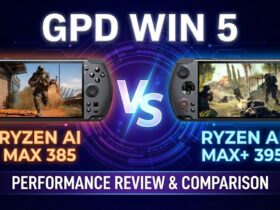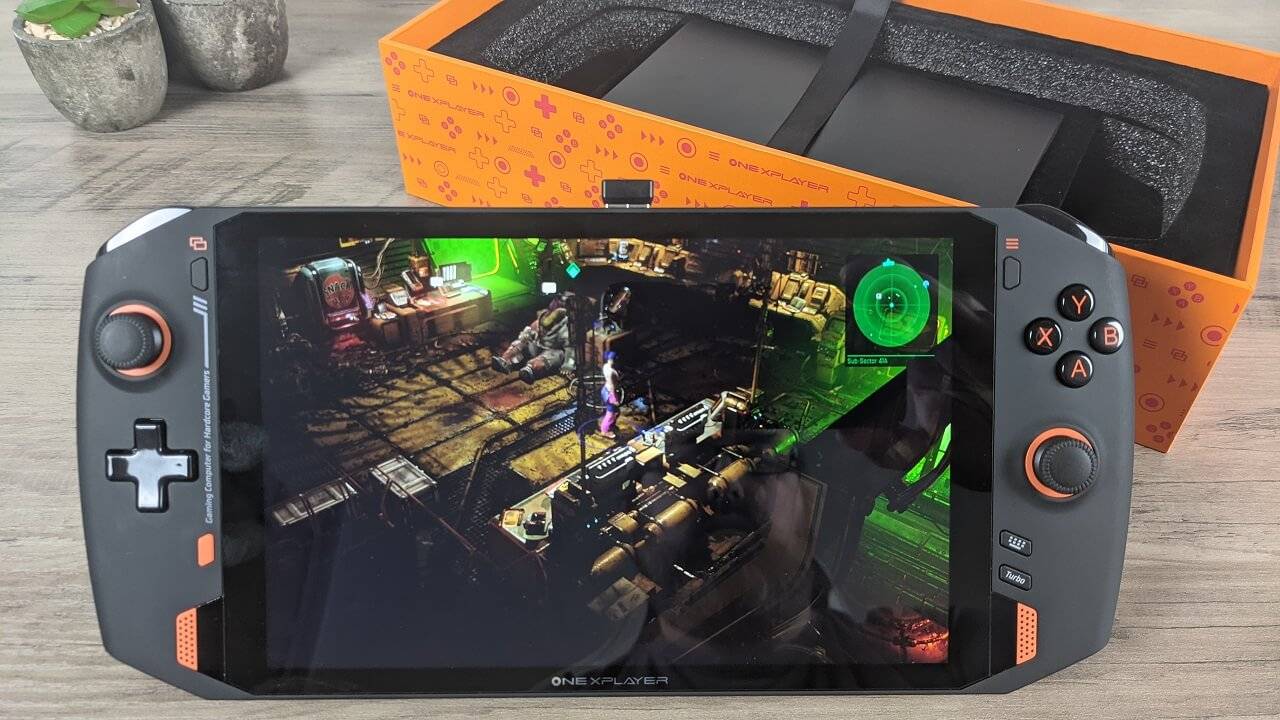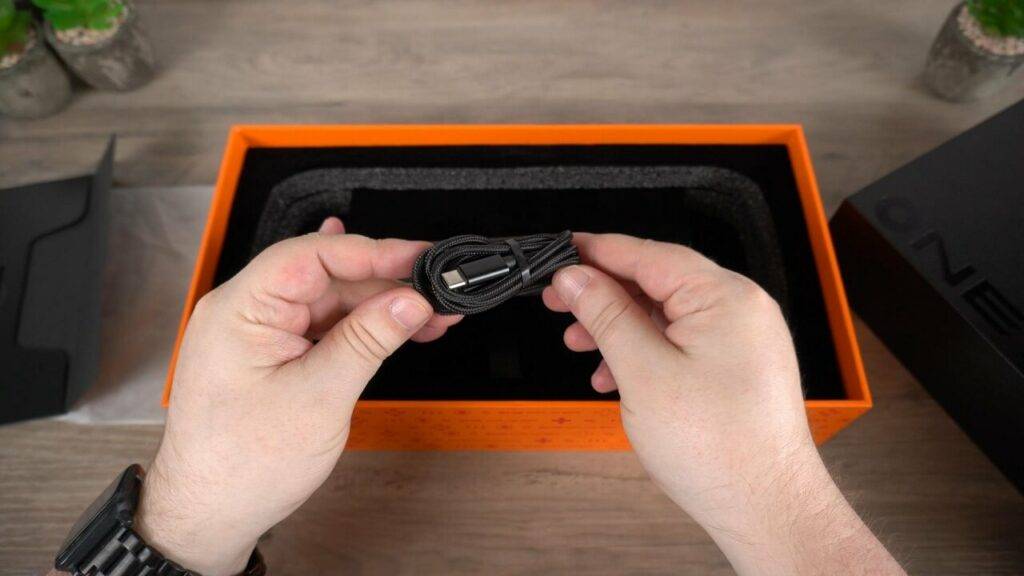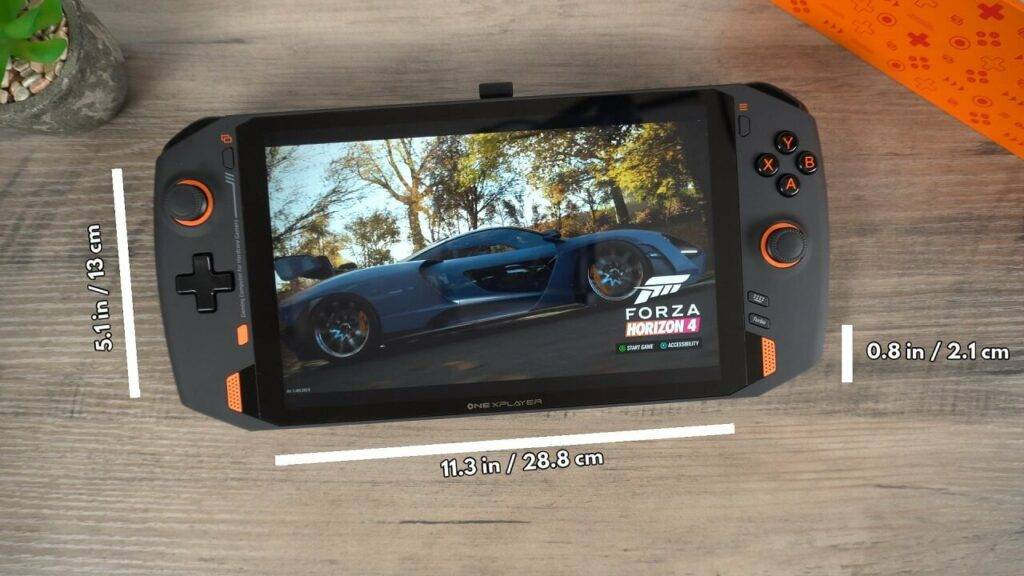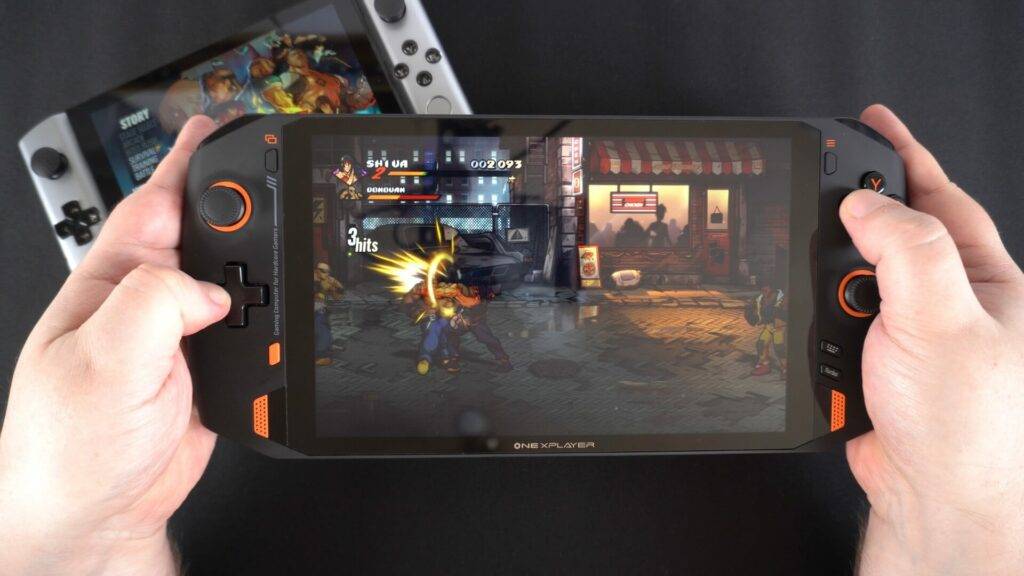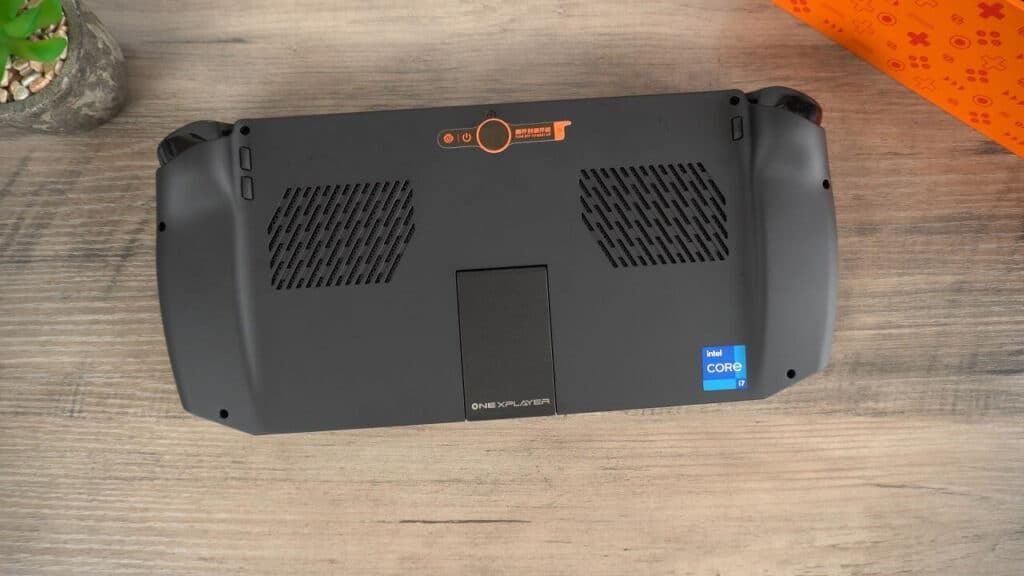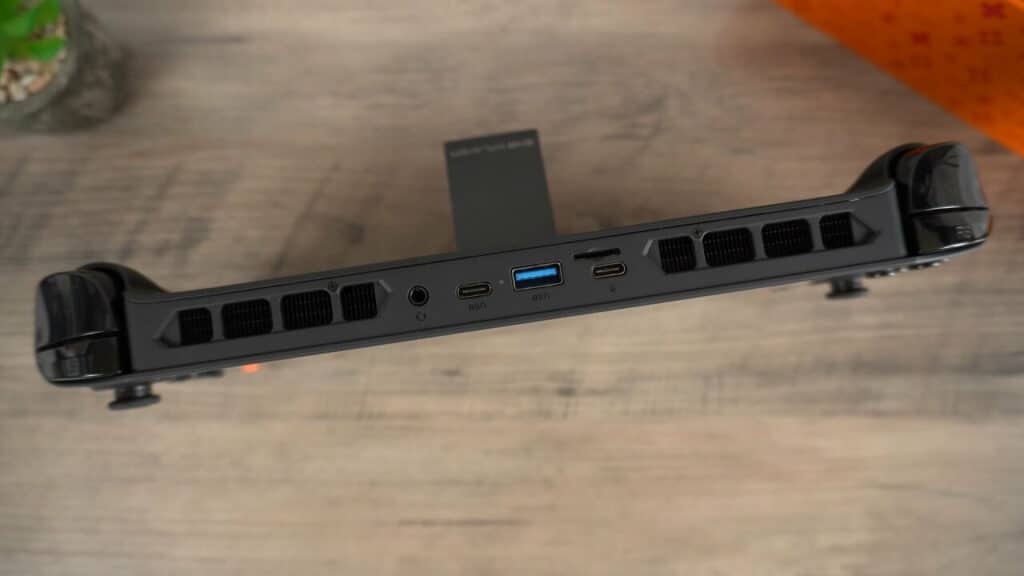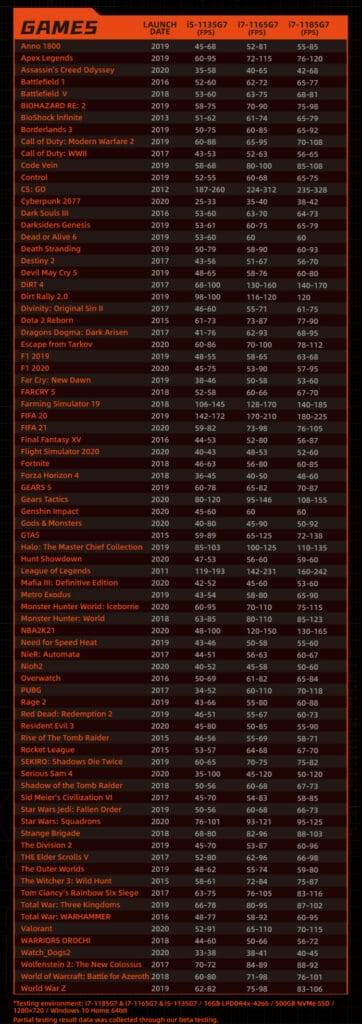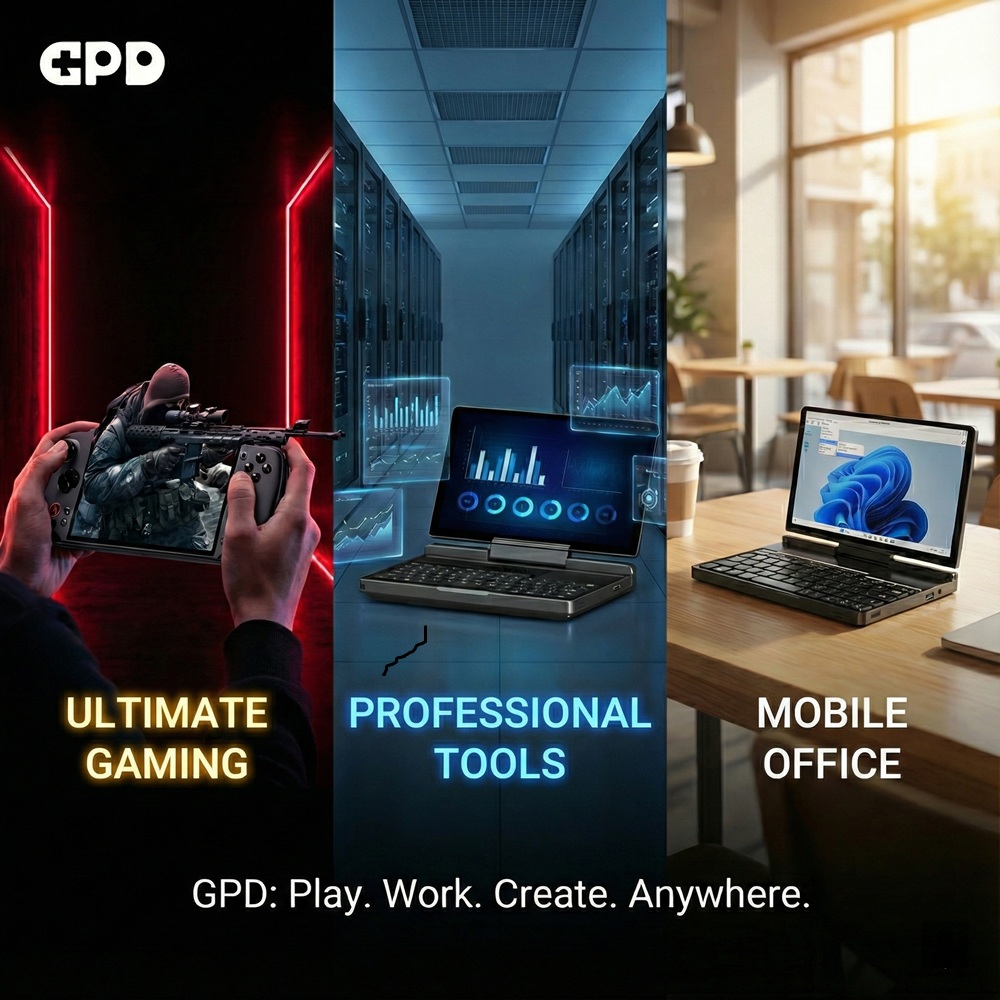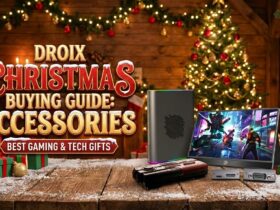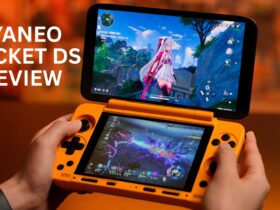Welcome to the official DroiX ONEXPLAYER 1S review! Popular mini laptop manufacturer One-Netbook have finally taken a shot at their version of a handheld gaming PC!
The eagerly awaited ONEXPLAYER 1S handheld gaming PC is finally in our hands for review. Watch or read our unboxing and overview of this high performance gamers dream!
The ONEXPLAYER is available to buy in two models. There is a choice of Intel Core i5 or Intel Core i7 processor. There a massive 16GB of Dual-Channel LPDDR4X High-Speed RAM. For storage there is 1TB of PCIe 3.0×4 NVMe. It comes with Windows 10 fully licensed, and will run all your favourite software including AAA Windows games!
You can watch our ONEXPLAYER 1S review video below. Or if you prefer you scroll down a little further for a text based version with images.
ONEXPLAYER 1S Unboxing
Starting off the OneXPlayer 1S review, we’ll take a look at the unboxing experience for this awesome portable gaming handheld PC.
The ONEXPLAYER 1S comes in high quality packaging with a nice bright patterned orange base on the box. It stands out and looks great!
Inside we have the ONEXPLAYER 1S device which we will take a closer look at shortly.
Underneath is a quick start guide which is in Chinese & English. It covers everything you need to get started and explains all the features.
Inside the cardboard box is a high quality braided USB Type- Cable which is used for charging and data transfer.
And last but not least is the USB charger, we will include the correct power adapter for your countr.
ONEXPLAYER 1S Review
Size
We will take a closer look at the ONEXPLAYER 1S and its features. It measures 11.3 x 5.1 x 0.8 inches ( 28.8 x 13 x 2.1 cm) and weighs 820g. Out of all the recent handheld game consoles we have reviewed, the ONEXPLAYER is definitely the largest!
Features
The display is a 8.3 inch full-fit FHD IPS screen, with a maximum resolution of 2560×1600. It supports 10 point touch and also supports the OneNetbook Stylus which is available to buy separately.
There are clickable dual analogue joysticks which are manufactured by ALPS, widely known for their high quality sticks.
Below is a classic D-Pad and four gaming buttons which are very responsive, they are spot on for retro gaming!
On either side of the screen are Back and Start buttons . The Back button is essentially the same as a SELECT button.
Towards the bottom just below the D-Pad is an orange Desktop button. This will minimise all open windows and show the desktop.
On the opposite right is a Keyboard & Mouse button which when pressed displays an on screen keyboard. This is useful for software that does not support the standard on screen keyboard.
Below that is a Turbo Mode switch button which illuminates when active.
And last but not least, there are stereo speakers on either side of the screen. They are good quality and clear when playing audio loud.
Back of the ONEXPLAYER 1S
On the back you can find the combined power button and fingerprint sensor. You can use this to quickly and safely log into Windows.
On one side you have Volume Up and Down buttons, and on the other is a mute button. Despite being near the hand grip, they are just the right size and position. You do not accidentally press them while gaming.
A nice and useful feature is the built in stand which lifts up. You can then sit the ONEXPLAYER on a flat surface which is great when using it as a desktop PC or watching DroiX videos on YouTube!
Top of the ONEXPLAYER 1S
On either side on the top of the OneNetbook ONEXPLAYER 1S, there are touch-click bumper and linear analogue trigger buttons. So for example in racing games, you can apply just the right amount of pressure on the trigger buttons for the respective acceleration.
In the middle are two USB 4.0 Type-C ports, these can be used for charging the handheld and high speed data transfer. You can also connect it to an external eGPU graphics card, or connect to a hub with video output to a TV or monitor for example.
There is a Micro SD Card slot for additional storage. And finally there is a USB 3.0 port which can be used to connect peripherals to.
Inside you can find WiFi 6 support and Bluetooth 5.0 for wireless communication.
ONEXPLAYER 1S Review Part Two Out Now!
The second part of our ONEXPLAYER 1S review video and blog post is now online here. We are playing nine AAA Windows games showing around a minute or so of each game to see their performance.
Where to buy the ONEXPLAYER 1S
We have a dedicated full detail product page where you can also buy the ONEXPLAYER 1S here, the release date is expected around September 3rd.
ONEXPLAYER FAQ – All You Need To Know
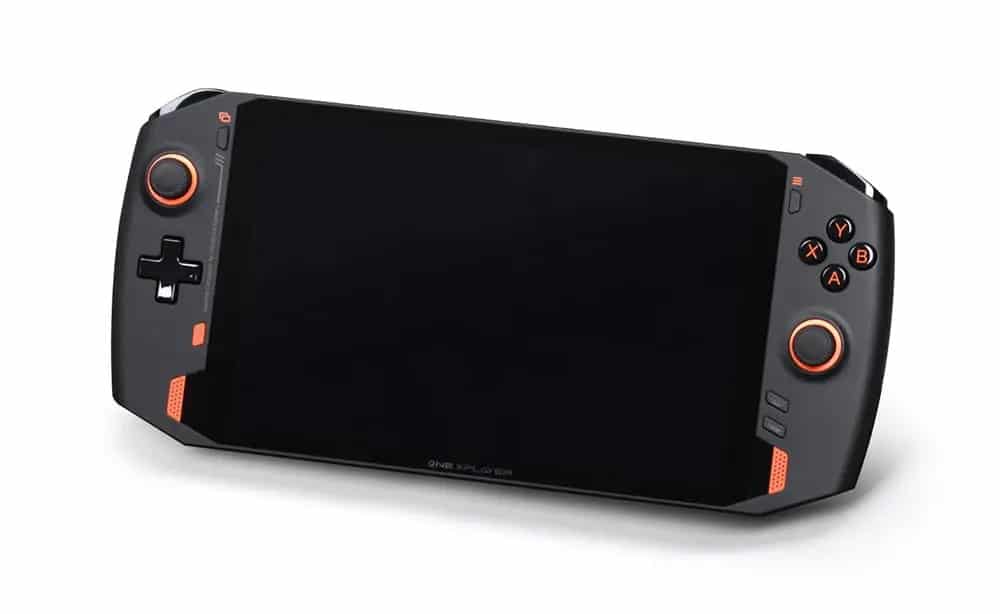
Originally posted by benjamin on: 30/07/2021
Welcome to our FAQ for the ONEXPLAYER – where we’ll go over all you need to know about this up-and-coming handheld gaming console!
What is the ONEXPLAYER?
The ONEXPLAYER is an up-and-coming Intel gaming handheld PC developed by ONE NETBOOK. A manufacturer of various small-form-factor laptops. Such as the popular One Mix 3 series of business mini laptops, the GX1 mini gaming laptop, and the niche engineering-centric A1.
With a crowdfunding opportunity opened in May 2021, the ONEXPLAYER garnered an impressive amount of funding at £1,486,274 – over 8000% of what was requested.

Why are people so excited about the ONEXPLAYER? We’ll take a look at that in just a moment.
[FAQ] ONEXPLAYER Preliminary Specifications
We’ll be headlining this ONEXPLAYER FAQ with the specs of the unit (as we know them to be at the time of writing).
The technical specifications for the ONEXPLAYER are as follows:
| Component | Specification(s) |
|---|---|
| Processor | Intel Core i5-1135G7 Intel Core i7-1165G7 Intel Core i7-1185G7 |
| Graphics | Intel Iris® Xe Graphics |
| RAM | 16GB |
| Memory Type | LPDDR4x @ 4266MHz |
| SSD Form Factor | M.2 2280 |
| SSD Interface | PCIe (NVMe) SATA |
| Screen | 10-point Touchscreen 8.4-inch 2560*1600p IPS 358ppi |
| Ports | 2x USB-C 4.0 1x USB-C 3.0 3.5mm Audio Jack 1x microSD card slot |
| Game Controller | Clickable (L3/R3) analogue sticks Built-in rumble D-Pad w/ independent buttons Face buttons (A/B/X/Y) Bumpers/Analogue Triggers (L1/R1, L2/R2) |
| Sensors | N/A |
| Speakers | 2x Stereo Speakers |
| Battery | 15300mAh |
| Adapter | 65W |
| Wi-Fi | WiFi 6 (802.11/a/b/g/n/ac/ax) Dual-Band (2.4G/5G) MU-MIMO Support |
| Bluetooth | Bluetooth 5.0 |
| Weight | 820g approx. |
| Dimensions (L/W/H) | 288mm * 130mm * 21mm |
Three Processor Options?
The ONEXPLAYER has officially been listed by ONE NETBOOK in three configurations. One with an Intel Core i5-1135G7 processor and a 512GB SSD, one with an Intel Core i7-1165G7 and a 1TB SSD; and finally, one with an Intel Core i7-1185G7 and a 2TB SSD.
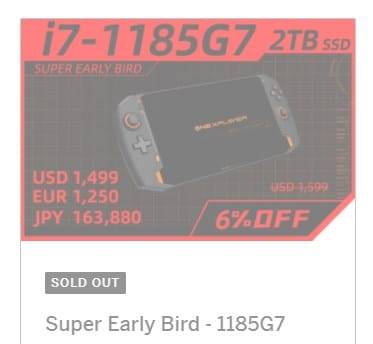
At the time of crowdfunding, only 50 1186G7 models were available. They sold out instantly, so it remains to be seen what the availability for future units will be like.
Memory & Storage
The ONEXPLAYER, like most mini PCs and windows gaming handhelds nowadays, features an NVMe SSD. This has been verified by one Netbook to work with SSDs of up to 2TB in size. A microSD card slot is also present in case you need just that little bit more when it comes to space.
LPDDR4X RAM works in tandem with the Intel Processor to – like on the GPD Win 3 – provide an overall smooth experience in a variety of games.
Battery Life?
The ONEXPLAYER features a whopping 15300mAh battery that supports power-delivery (PD) fast charging. This has been stated by One Netbook (as per the battery section in the ONEXPLAYER infographic FAQ) to handle “about 10 hours of local video playtime”. Actual lifetime when playing games will likely be anywhere from 2 to 7 hours depending on what’s being played.
[FAQ] ONEXPLAYER Performance
Like other handhelds, the ONEXPLAYER can expect comfortable framerates in most games when playing at 720p. One Netbook have carried out a testing program of their own with various games across all three models. See below for the full table taken from the FAQ on the ONEXPLAYER’s indiegogo page.
However, the larger resolution – while more comfortable to look at – may present a small hit in performance if you want to really make the most of every single pixel.
Given that it uses the same kind of processor(s) as the GPD Win 3, and the same kind of RAM, you can expect similar performance from both, which can be seen in the GPD Win 3’s benchmarks.
[FAQ] ONEXPLAYER Design
The ONEXPLAYER is perhaps the most… “normal”, of the windows gaming handhelds currently making their way to the market.
The defining trait of the ONEXPLAYER is it’s gargantuan size. With an 8.4-inch screen, it really stretches the limits of what one would define as “portable”. This large, high-resolution (1600p!) screen does provide extremely crisp visuals for movies and games that support its non-standard resolution.
It does also feature a rather striking black and orange motif., which lends itself well to “gaming” aesthetics.
Of the three available currently, the ONEXPLAYER is also the only one to feature a built-in kickstand.
Keyboard Attachment?
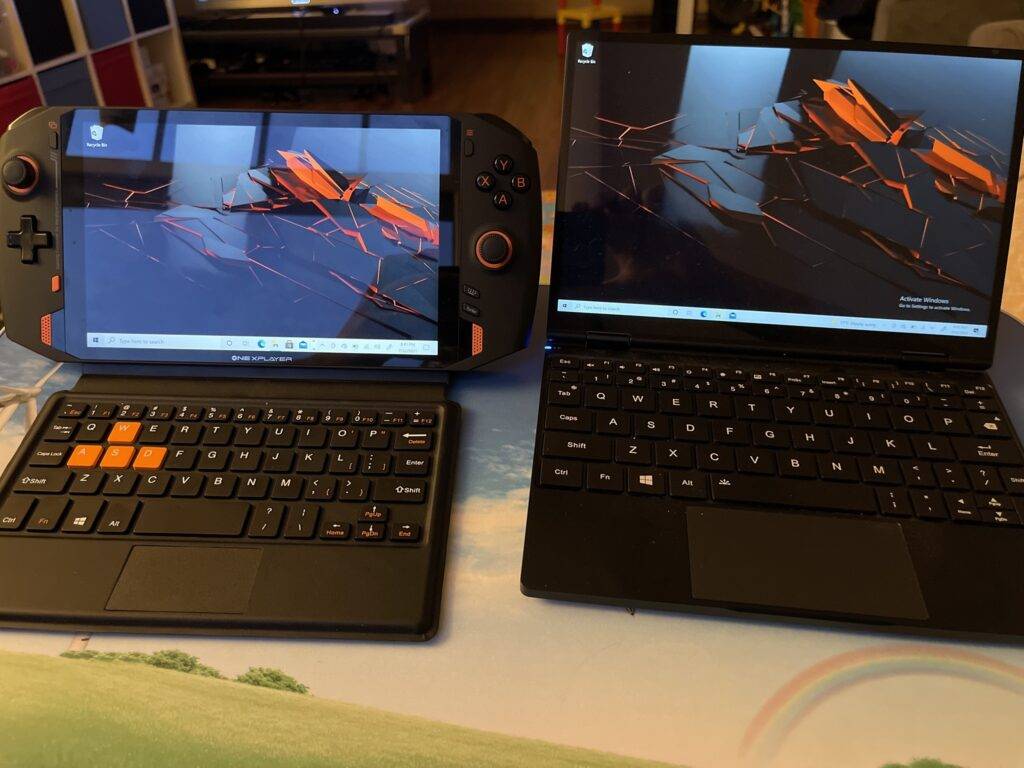
One Netbook will be providing an (optional) official keyboard attachment for the device. With this added heft connected, the ONEXPLAYER essentially becomes a laptop, and will take up a similar amount of space in your home or in your bag (perhaps more when you factor in the carry case).
You can of course connect keyboards of your own via the USB ports or Bluetooth if you so wished instead.
Another gaming handheld?
You may be wondering why we’ve written an FAQ about the ONEXPLAYER when it just appears to be a plain gaming handheld.
The ONEXPLAYER is essentially another in the line of [Switch]-styled windows gaming handhelds that presents an opportunity to play AAA games on a handheld device.
If it isn’t apparent already, the ONEXPLAYER’s primary charm point is the larger screen. Those of you who were fans of the [DS] XL handhelds will understand how a larger screen can really enhance the experience (despite being a “portable” device).
The device also holds a trick or two up its sleeve with the included USB 4.0 ports.
External GPUs (eGPUs) & the ONEXPLAYER
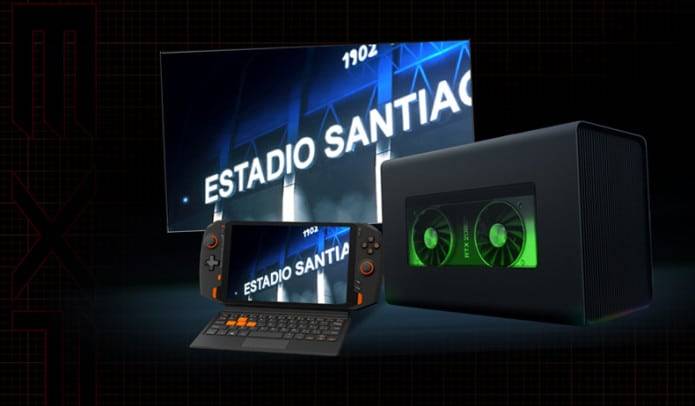
The ONEXPLAYER, thanks to the ludcirous transfer speeds of USB 4 (up to 40Gbps!) and the technologies behind the 11th Generation Intel processors, can make use of what is known as an “external GPU” (or: eGPU).
An eGPU is essentially a dedicated graphics card (of your choice) that is contained within a separate enclosure (also your choice!), and provides power and protection to the card. The ONEXPLAYER can then connect to this eGPU enclosure, and the two devices can work in tandem as if they were a normal PC.
Running an eGPU setup WILL be prohibitively expensive for most, even more so given the poor availability of graphics cards currently. But it is an option for those interested.
[FAQ] ONEXPLAYER Release Date
The ONEXPLAYER will begin shipping to backers in rolling batches starting in late Q2 2021. A release date for general purchase is expected to be in late Q3 2021, this date is however tentative. and may be subject to delays.
Price & Launch Options
The ONEXPLAYER has three configurations currently “available” (at least, they technically exist) across a variety of processor/storage combinations. The prices listed here are representative of the prices provided by the official crowdfunding page. Early purchasers were able to snatch discounts of up to 15%.
| Configuration | Price |
|---|---|
| i5-1135G7 + 512GB SSD | $8,224 HKD (£757.18 GBP) |
| i7-1165G7 + 1TB | $9,001 HKD (£828.72 GBP) |
| i7-1185G7 + 2TB | $11,640 HKD (£1,143.23 GBP) |
These prices do not include customs fees. A 1 year warranty is included (as mentioned in the indiegogo page’s FAQ for the ONEXPLAYER), but you will be required to send items back to China in the event of faults/etc.
The ONEXPLAYER can also be purchased from DroiX, starting from £1049 GBP. This features a 30 day refund window and a 1 year warranty that is handled by a UK-based team.
